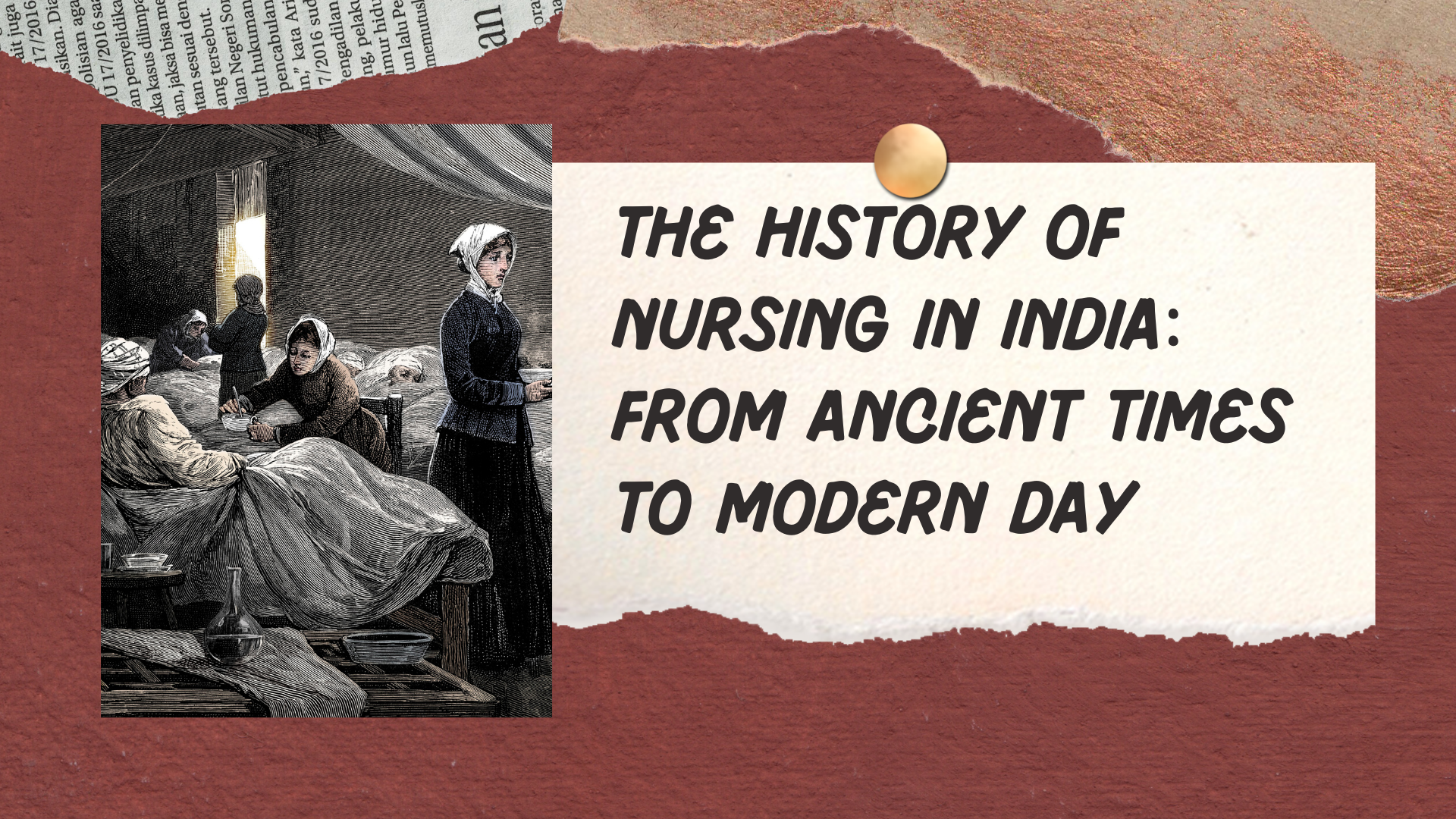Nurse staffing ratios have long been a topic of debate and research in healthcare. In 2025, as hospitals strive to provide higher quality care while managing costs, the relationship between nurse staffing ratios and patient outcomes is more critical than ever. Nurses are not only the backbone of patient care—they are also key players in driving quality, safety, and overall patient satisfaction. In this article, we explore how nurse staffing ratios influence patient outcomes, the challenges faced by healthcare institutions, and strategies for creating a sustainable, high-quality nursing workforce.
Thank you for reading this post, don't forget to subscribe!
Introduction
Every day, nurses work tirelessly to provide care in environments where staffing levels can make a significant difference in patient outcomes. For many, the link between adequate staffing and improved patient safety is evident. When there are enough nurses on the floor, patients receive timely care, potential complications are identified early, and overall satisfaction increases. Conversely, understaffing can lead to delays, higher stress levels among nurses, and ultimately, poorer patient outcomes.


This article delves into the impact of nurse staffing ratios on patient outcomes, examining the evidence behind this relationship, the human experiences behind the statistics, and what the future may hold as healthcare continues to evolve.
Understanding Nurse Staffing Ratios
a. What Are Nurse Staffing Ratios?
Nurse staffing ratios refer to the number of patients assigned to one nurse during a shift. These ratios vary widely depending on the care setting, patient acuity, and hospital policies. In intensive care units (ICUs), for instance, staffing ratios tend to be lower (fewer patients per nurse) compared to general medical-surgical units where nurses may care for more patients.
- Higher Staffing Ratios: Fewer patients per nurse, allowing for more individualized attention.
- Lower Staffing Ratios: More patients per nurse, which can lead to overwork, stress, and potentially lower quality care.
b. The Evolution of Staffing Ratios
Over the years, research has consistently shown that staffing ratios play a critical role in determining patient outcomes. Increased awareness of patient safety and quality care has led many healthcare organizations to reexamine and improve their staffing models. In 2025, this evolution is driven not only by clinical data but also by a growing recognition of the human impact on both patients and nurses.
Historically, many hospitals operated under tight budgets that led to higher patient loads per nurse. Today, with a focus on value-based care, improving patient outcomes is a priority. Healthcare leaders are now more willing to invest in better staffing as part of their commitment to quality care.
The Connection Between Staffing Ratios and Patient Outcomes
a. Patient Safety and Quality of Care
One of the most direct impacts of nurse staffing ratios is on patient safety. When nurses have fewer patients to care for, they can devote more time to monitoring, responding to changes, and performing crucial tasks. This leads to:
- Timely Interventions: Nurses can identify subtle changes in a patient’s condition more quickly.
- Reduced Errors: With a manageable workload, the likelihood of medication errors, missed care, and other mistakes decreases.
- Enhanced Patient Monitoring: Continuous, close monitoring results in early detection of complications.
Research consistently shows that hospitals with better nurse-to-patient ratios have lower rates of hospital-acquired infections, reduced mortality, and improved overall patient satisfaction. When nurses are not rushed, they are better equipped to deliver the kind of attentive, high-quality care that leads to better outcomes.
b. Nurse Burnout and Retention
Beyond patient safety, staffing ratios also significantly impact nurses’ well-being. Understaffing can lead to burnout, stress, and job dissatisfaction, which in turn affect the quality of care. When nurses are overworked:
- Emotional and Physical Fatigue: Chronic fatigue leads to decreased vigilance and reduced ability to provide compassionate care.
- High Turnover: Burnout contributes to higher turnover rates, creating a cycle that further exacerbates staffing challenges.
- Job Dissatisfaction: When nurses feel undervalued and overwhelmed, their ability to advocate for patients diminishes.
A supportive staffing environment not only improves patient care but also enhances nurse retention. Nurses who work in environments where they have the time and resources to care properly for their patients are more likely to experience job satisfaction and remain in the profession.
c. Impact on Clinical Outcomes
Studies have demonstrated a clear correlation between staffing ratios and key clinical outcomes:
- Lower Mortality Rates: Hospitals with favorable staffing ratios consistently report lower patient mortality rates.
- Fewer Complications: Proper staffing reduces the risk of complications such as falls, pressure ulcers, and infections.
- Shorter Hospital Stays: Effective, timely care contributes to faster recovery and reduced hospital length-of-stay.
- Improved Patient Satisfaction: When patients receive personalized and prompt care, satisfaction scores tend to be higher.
These outcomes not only enhance patient care but also contribute to the overall efficiency and effectiveness of healthcare systems, leading to better resource utilization and cost savings.
The Human Side of Staffing Ratios
Behind every statistic is a human story. Consider the nurse who can spend a few extra minutes with a patient, providing comfort, answering questions, and catching a potential issue before it escalates. Each additional patient added to a nurse’s workload can dilute the quality of care and reduce the time available for these critical interactions.
a. Real-Life Impact on Patients
Patients often describe their care experience in terms of how much time their nurse spent with them. When staffing is adequate, nurses can build stronger relationships, leading to increased trust and better adherence to treatment plans. Personal connections are a cornerstone of effective healthcare—when patients feel heard and valued, their overall well-being improves.
b. The Nurse’s Experience
Nurses who work in well-staffed environments report higher job satisfaction, lower stress levels, and a greater sense of professional fulfillment. They have the capacity to engage deeply with their work, contribute to team-based care, and pursue professional development opportunities. In contrast, nurses in understaffed settings may experience burnout, decreased morale, and a diminished ability to provide empathetic, quality care.
The human touch is what sets nursing apart. It is the empathy, compassion, and personal attention that create meaningful differences in patient care. Optimal staffing ratios enable nurses to provide this human touch consistently, leading to better health outcomes and more rewarding work experiences.
Strategies for Improving Nurse Staffing Ratios
Addressing nurse staffing ratios requires concerted efforts from healthcare organizations, policymakers, and the nursing community. The following strategies can help create a more supportive environment for nurses, thereby improving patient outcomes.
a. Policy and Regulatory Reforms
- Mandated Ratios: Some regions have implemented mandatory nurse-to-patient ratios to ensure that staffing levels meet established safety standards.
- Incentives for Staffing: Financial incentives, such as improved reimbursement rates or bonuses for hospitals that maintain optimal staffing, can encourage better staffing practices.
- Legislative Support: Advocating for policies that prioritize nurse staffing and allocate sufficient resources for healthcare services is essential.
b. Workforce Development and Education
- Expanding Nursing Programs: Increasing the capacity of nursing schools and providing scholarships can help grow the nursing workforce.
- Retention Initiatives: Programs that offer career development, mentorship, and professional support can improve nurse retention.
- Interdisciplinary Training: Cross-training with other healthcare professionals can create a more flexible workforce that adapts to varying patient needs.
c. Technological Integration
- Digital Tools for Scheduling: Implementing advanced scheduling systems can optimize staff allocation and ensure that nurses are not overburdened.
- Telehealth and Remote Monitoring: Leveraging telehealth can reduce the physical workload by enabling remote patient monitoring and follow-ups.
- Data Analytics: Utilizing analytics to track staffing patterns and patient outcomes can help identify areas for improvement and inform policy changes.
d. Organizational Culture and Leadership
- Supportive Leadership: Leaders must prioritize nurse well-being and advocate for adequate staffing. This includes regular feedback sessions, recognition programs, and open communication.
- Empowerment Initiatives: Encouraging nurses to participate in decision-making processes regarding staffing and care delivery fosters a culture of collaboration and innovation.
- Work Environment Improvements: Creating a positive, supportive work environment can help reduce stress and burnout, contributing to better patient care.
The Future of Nurse Staffing and Patient Outcomes
As we move into the future, the focus on nurse staffing ratios will likely intensify. Advancements in technology, changes in healthcare policies, and ongoing research will continue to shape staffing practices.
a. Emerging Trends
- AI and Predictive Analytics: Future staffing models may incorporate AI to predict patient needs and optimize nurse allocation in real time.
- Flexible Staffing Models: Innovative approaches, such as flexible shift scheduling and part-time roles, will offer more options for nurses and help balance workloads.
- Global Workforce Integration: International recruitment and collaboration may help address regional shortages and improve overall staffing levels.
- Enhanced Training Programs: Ongoing education will ensure that nurses are equipped with the skills necessary to thrive in high-stress environments, further improving patient outcomes.
b. The Role of Research
Continuous research is critical to understanding the complex relationship between staffing ratios and patient outcomes. Studies that evaluate different staffing models and their impact on clinical outcomes, patient satisfaction, and nurse well-being will provide the evidence needed to drive policy changes and improve healthcare practices. As more data becomes available, healthcare organizations can make informed decisions to optimize staffing and enhance patient care.
c. Policy and Practice Integration
The future of nurse staffing will involve a closer integration of policy and practice. Advocacy by nursing leaders, supported by robust research data, will be essential in shaping policies that promote safe staffing levels and support nurse well-being. Collaborative efforts between policymakers, healthcare organizations, and nursing associations will be vital to creating a healthcare system that values quality care over quantity.
Frequently Asked Questions (FAQs)
Q1: What are nurse staffing ratios and why are they important?
A: Nurse staffing ratios refer to the number of patients assigned to one nurse during a shift. They are important because they directly affect the quality of patient care, the safety of both patients and nurses, and overall healthcare outcomes.
Q2: How do better nurse staffing ratios improve patient outcomes?
A: Higher staffing ratios allow nurses to spend more time with each patient, leading to timely interventions, reduced errors, better monitoring, and overall improved care. This results in lower rates of complications, shorter hospital stays, and increased patient satisfaction.
Q3: What are the main challenges in maintaining optimal staffing ratios?
A: Challenges include workforce shortages, budget constraints, high patient volumes, and systemic issues such as administrative burdens and resistance to policy changes.
Q4: How can technology help improve nurse staffing?
A: Digital scheduling tools, AI-driven predictive analytics, and telehealth solutions can help optimize staffing by ensuring that nurses are allocated effectively and patient needs are met promptly.
Q5: What strategies can healthcare organizations use to improve staffing ratios?
A: Organizations can advocate for policy reforms, invest in workforce development and education, implement flexible staffing models, and foster a supportive work environment that prioritizes nurse well-being.
Q6: How does nurse staffing affect nurse burnout?
A: Adequate staffing reduces the workload on each nurse, which decreases stress and burnout. When nurses are not overburdened, they are better able to provide high-quality care and maintain their own health and job satisfaction.
Q7: What future trends will impact nurse staffing in healthcare?
A: Future trends include the integration of AI for real-time staffing optimization, more flexible work models, enhanced global collaboration to address shortages, and ongoing research that informs better staffing policies and practices.
Conclusion
Nurse staffing ratios have a profound impact on patient outcomes, nurse well-being, and the overall effectiveness of healthcare systems. In 2025, the shift towards value-based care has brought greater attention to the importance of optimal staffing levels, as healthcare organizations strive to deliver high-quality, patient-centered care. Nurses play a pivotal role in this transformation by providing direct care, advocating for policy changes, and utilizing technology to optimize workflows.
The human side of nursing is evident in every interaction—when nurses have the time to offer compassionate care, patients feel more supported, and outcomes improve. As the healthcare landscape continues to evolve, embracing innovative staffing models, investing in technology, and fostering a culture of continuous improvement will be essential. Nurses are not only caregivers but also leaders and advocates for a more equitable and efficient healthcare system.
The journey to achieve ideal nurse staffing ratios is challenging, but the rewards—improved patient safety, better clinical outcomes, and enhanced nurse satisfaction—make it a critical priority. By working together through interdisciplinary collaboration, policy advocacy, and technological integration, we can create a future where every patient receives the care they deserve, and every nurse is empowered to perform at their best.
In the end, the impact of nurse staffing on patient outcomes is not just a matter of numbers—it’s about the quality of care, the compassion in every interaction, and the collective commitment to making healthcare better for everyone. The future of nursing depends on our ability to adapt, innovate, and lead with empathy, ensuring that both patients and healthcare professionals thrive.
References and Sources
- American Nurses Association (ANA). (2023). Impact of Nurse Staffing on Patient Safety and Quality. Retrieved from https://www.nursingworld.org
- Institute for Healthcare Improvement (IHI). (2022). Quality Improvement in Healthcare. Retrieved from https://www.ihi.org
- Centers for Medicare & Medicaid Services (CMS). (2024). Value-Based Purchasing and Staffing Standards. Retrieved from https://www.cms.gov
- Journal of Nursing Administration. (2023). Data-Driven Approaches to Nurse Staffing. Retrieved from https://journals.lww.com/jna
- Peer-reviewed articles from the American Journal of Nursing and the Journal of Healthcare Management.
- Additional resources from the National Academy of Medicine and recent policy briefs on nurse staffing.


